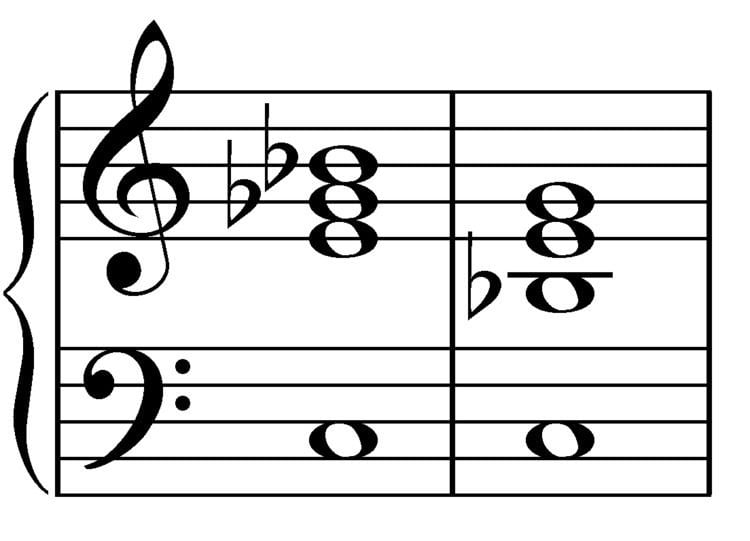 | ||
In music theory, the dominant seventh flat five chord is a seventh chord composed of a root note, together with a major third, a diminished fifth and a minor seventh from root (1, ♮3, ♭5 and ♭7). For example, the dominant seventh flat five built upon C (C7♭5) would be C–E–G♭–B♭. It can be represented by the integer notation {0, 4, 6, 10}. In diatonic harmony, the dominant seventh flat five chord does not naturally occur on any scale degree (as does, for example, the dominant seventh on the fifth scale degree: C7 in F major). This chord is enharmonically equivalent to its own second inversion.
The dominant seventh flat five may be considered an altered chord, created by diminishing the fifth of a dominant seventh chord, and may use the whole-tone scale, as may the augmented minor seventh chord, or the Lydian ♭7 mode, as well as most of the modes of the Neapolitan Major scale, such as Major Locrian, Leading Whole-Tone, and Lydian Minor. It is also used as a French augmented sixth, in second inversion (4/3), and is in fact enharmonic to its second inversion.
Minor seventh flat five
Similarly, a minor seventh flat five chord (m7♭5, also called as a half-diminished seventh chord) is constructed by diminishing the fifth of a minor seventh chord:
1 ♭3 ♭5 ♭7C E♭ G♭ B♭.The minor seventh flat five chord occurs in the diminished scale on multiple scale degrees as well as on the seventh degree of the major scale (e.g., B–D–F–A in C major).
